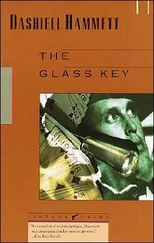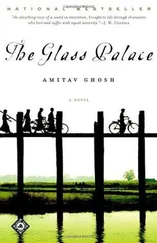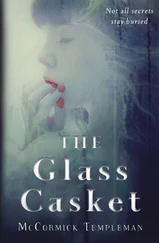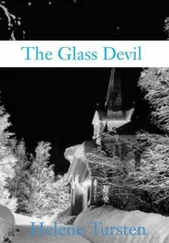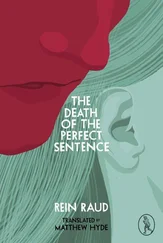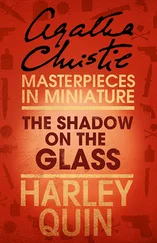“How does it do that?” Sophia breathed.
“That is what you will learn when you start making maps yourself. I can tell you it requires a great deal of research. The important thing to know now is this: when you read the map, it will be like having memories—you’ll experience the memories of the people who were there.”
Sophia’s eyes opened wide. “I want to try it.”
Shadrack leaned over the map, carefully keeping his arms on the table. “Try pointing out Boston Common to me. Can you find it on the map?”
“That’s easy,” Sophia scoffed. She reached out and placed her finger on the five-sided common, drawn in green at the right of the map. And suddenly, as her finger touched the cloth, she had a vivid memory—a memory that seemed her own. She saw the common in the early morning light, with clouds passing overhead. The landscape around her was blurry and dim, but she could recall vividly the cold bite of the wind and the damp in the air. Sophia felt herself shivering, the memory was so clear. She gasped and pulled her finger away from the map. The sensation faded. “Incredible,” she said. “It is so real. As if I am remembering it.”
Shadrack sat back with a look of gratification. “Yes. That is how it should be. That’s what these maps do .”
“But whose memories are they? Did you put them there?”
“Well, no—and yes. I learned about all the memories I could for this time and place. The map can only contain what the mapmaker finds. It’s not an all-seeing eye. The memories come from living people—people who were alive when I made the map—and from written memories.”
“I don’t understand how they are there .”
Shadrack paused. “Do you recall the drawing in your parents’ room? The one of Minna and Bronson on the day they were married?”
Sophia looked at him. “I didn’t know it was drawn the day they were married.”
“It was. You may have noticed that the drawing is unlike others. More alive, perhaps.”
“I had noticed,” she said slowly. “But I thought it was my imagination. When I was younger, I would remember them so clearly whenever I looked at it.”
“Whenever you touched it,” Shadrack corrected. “I used some of the techniques that I use for mapmaking in that drawing. It is not the same, of course—a static portrait is far less powerful than a map. But it is the same principle.”
Sophia shook her head in wonder. “But I still don’t understand how the memories are in the drawing. How did you make this?”
“Imagine that when I made this map I traveled around to all the people I knew who remembered this moment, and I asked them to put their memories of it in a box. Then I went home and dove into all the hundreds of memories and used my knowledge about winds and temperature and humidity and sunlight and sorted out all the memories into their correct place and time.”
“You actually used a box?”
“No, the ‘box’ is this cloth itself. Just as you read the map now by touch, it was written by touch. All of the memories were placed there by people who came into contact with this cloth, but then it was my task to give them order and meaning. The cartologer transforms the material into a legible, comprehensible document.” He smiled. “It will make more sense when we actually practice it someday. For now, concentrate on reading.”
“I’m going to read another time.” Sophia moved the pebbles to the 12 on the day-clock and the 20 on the hour-clock. Then she gingerly put her fingertip on Boston Common and immediately recalled something that she had never lived through: standing in Boston Common in the middle of the night while the snowflakes swirled down around her. The sky was silver with clouds, and the air around her tasted cold. The snow moved across the common in gentle currents, as if shaped by an invisible breath. “It’s just wonderful,” Sophia said drawing her finger away. “I can’t believe it.”
Shadrack spoke with just the slightest hint of pride. “It’s not a bad map, if I say so myself. Took quite a while to pin down the last few days of the month. Very few people remembered the weather.” He considered the other maps on the table. “So what about these? Any luck?”
“Not yet.”
“Let’s look at them then, shall we?” Shadrack collected the pebbles, lifted the linen cloth, and gently turned it over. When he turned it right side up, it was once again blank, save for the inscriptions in the corner. “What about the clay tablet?”
She picked it up dubiously. She tried blowing on it, but nothing happened. “I don’t know,” she said, frowning.
“Your breath caused the linen to change,” Shadrack said. “It was the key to the map—it created a movement, an impetus, a catalyst that unlocked it. What do you think would do that to clay—to a piece of earth?”
Sophia sat silently for a minute, thinking hard. Suddenly something occurred to her. “I know!”
Shadrack raised his eyebrows. “What are you thinking?”
“Hand me your water.”
He edged it along the table and she dipped her finger into the cool liquid. Then she held it over the clay tablet and let a single drop fall. Immediately the surface of the clay began to change, and an intricately painted map appeared on the surface.
“I guessed it!”
“Well done. Earth responds to water. So try a date and time.”
At the far left of the tablet was a legend like the one on the cloth map. Sophia placed pebbles on the day-clock’s 15 and the hour-clock’s 10: midday on February the fifteenth. Then she examined the map. The spidery lines on the clay wove their way tightly around the city center and then trailed off as they worked their way outward.
“Clay maps are topographical,” Shadrack said. “They show the earth: hills, fields, forests, rivers, and so on. I think for this one it might be a little disorienting to look at the city center. Try an outlying region, out here.” Shadrack indicated the western part of Boston, where there was a green expanse of land and almost no lines.
Sophia held her breath with anticipation and touched the map. She was flooded with a memory of rolling hills. In the distance she saw a small pond and farther on an orchard of bare trees. She lifted her finger, pulling herself away from the memories. “What happens if I move?”
“Go ahead—try it.”
She carefully edged her finger upward on the map; it was like moving through a cascade of memories. She remembered pine forests and the thick needled carpet that lay underfoot; she remembered a long avenue lined with bare maples; she remembered the edge of a stream that was entirely frozen, dry leaves clumped in bundles at its edges. “It’s beautiful,” Sophia said quietly. “So many places—and so detailed.”
“The clay maps are usually less work-intensive,” Shadrack said. “In this case, the terrain didn’t change much over the course of the month, so I was able to spend more time working through the details of the landscape.”
“I want to see the others!” Sophia removed the pebbles and then gently turned the clay map face down. She picked up the metal map. “I think I need some matches. Am I right?” She looked at Shadrack inquiringly.
Without speaking, he reached into his pocket and pulled out a box.
Sophia struck one and held it over the metal map. The small orange glow spread from the spot below the match outward, across the coppery surface. As she dropped the match into the glass of water, a clear, silver-lined map appeared in the center of the sheet. It seemed etched, rather than painted, and the lines shone like mercury against the copper surface. Sophia admired the map for only a few seconds before eagerly placing pebbles on the clocks.
Читать дальше

